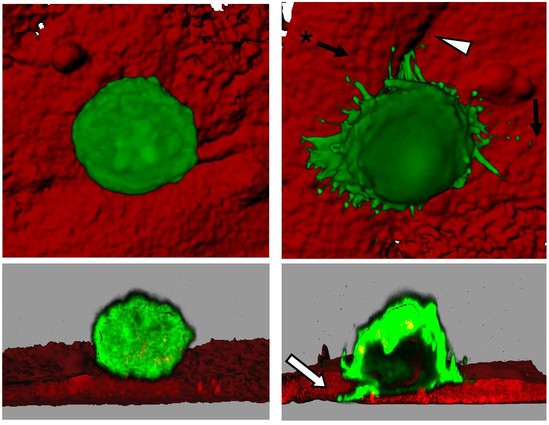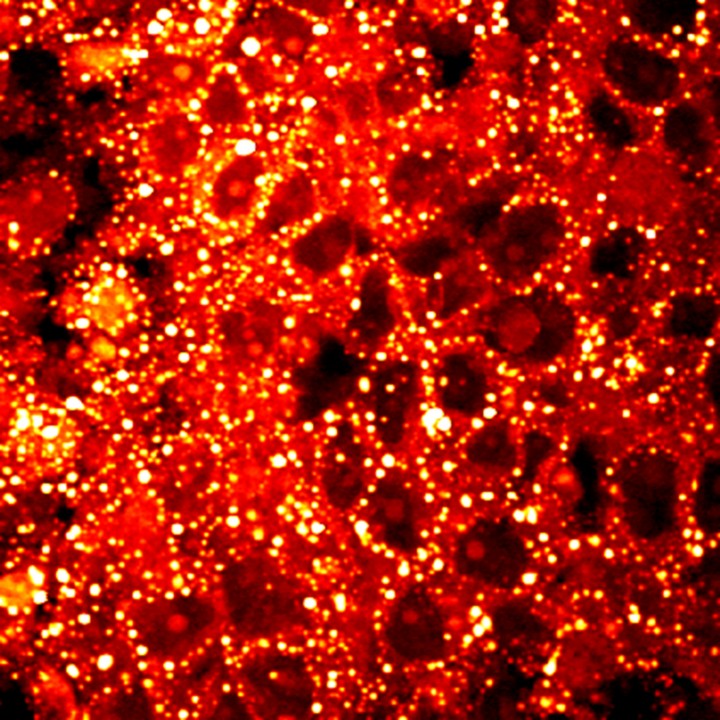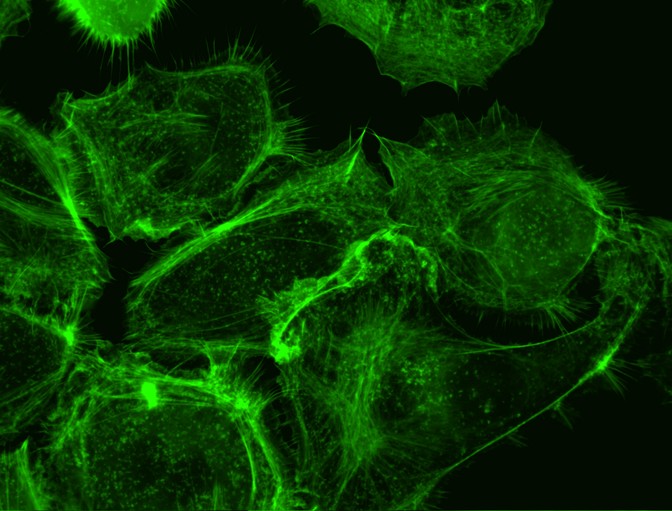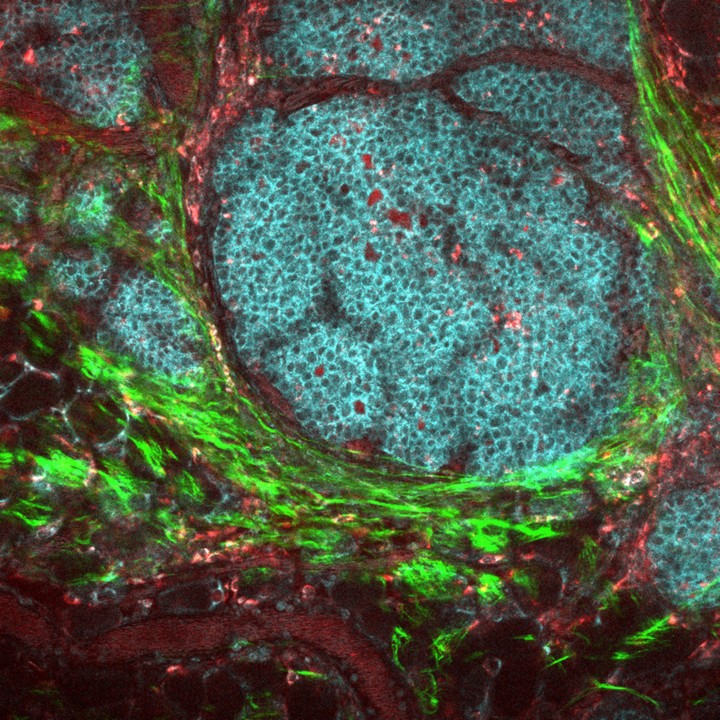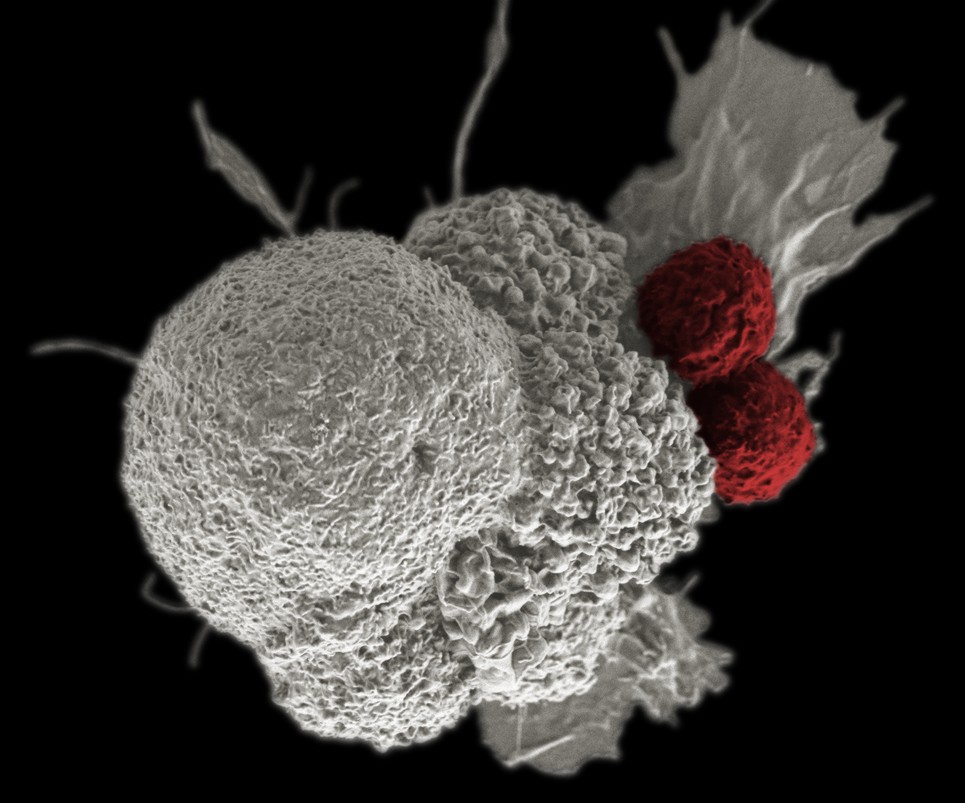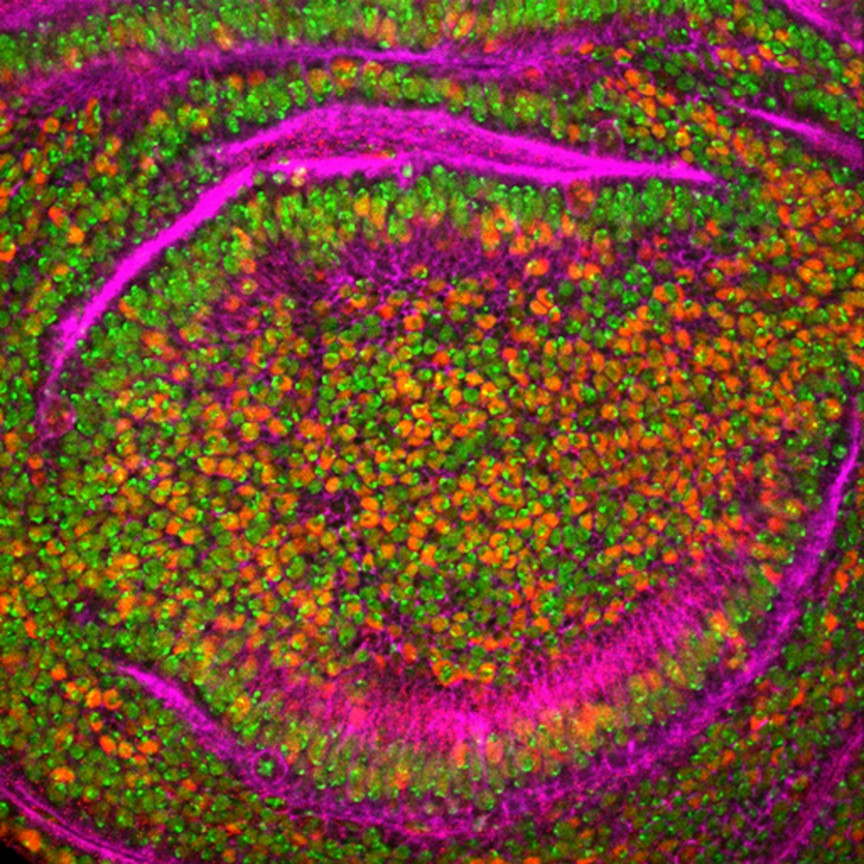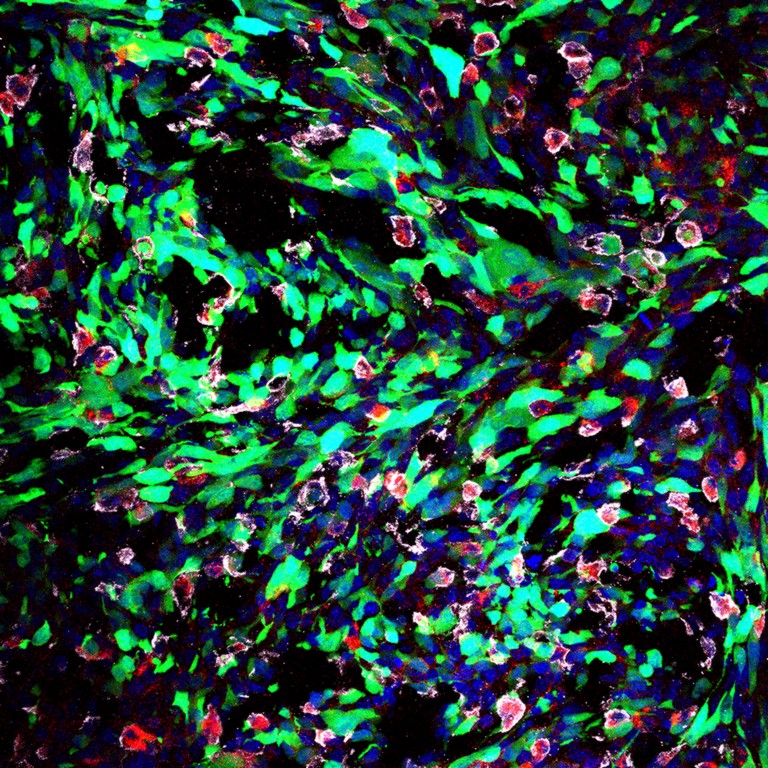Sometimes, nature is an abstract expressionist.
Below are selected images from the National Cancer Institute's "Cancer Close Up 2016" collection, posted last month.
The NCI in February put out a call to researchers for "spectacular microscopy photographs of cancer-related cells, tissues, and molecules that colorfully illustrate significant research conducted by NCI-designated cancer centers."
The NCI said it was particularly interested in images related to precision medicine, for which the agency receives funding as part of the federal government's Precision Medicine Initiative.
Most of the images were created using fluorescence microscope, an NCI spokesperson said. Some used an electron microscope. The images will adorn its exhibit booth at annual cancer research meetings and will be featured in public image galleries (not to mention Instagram).
